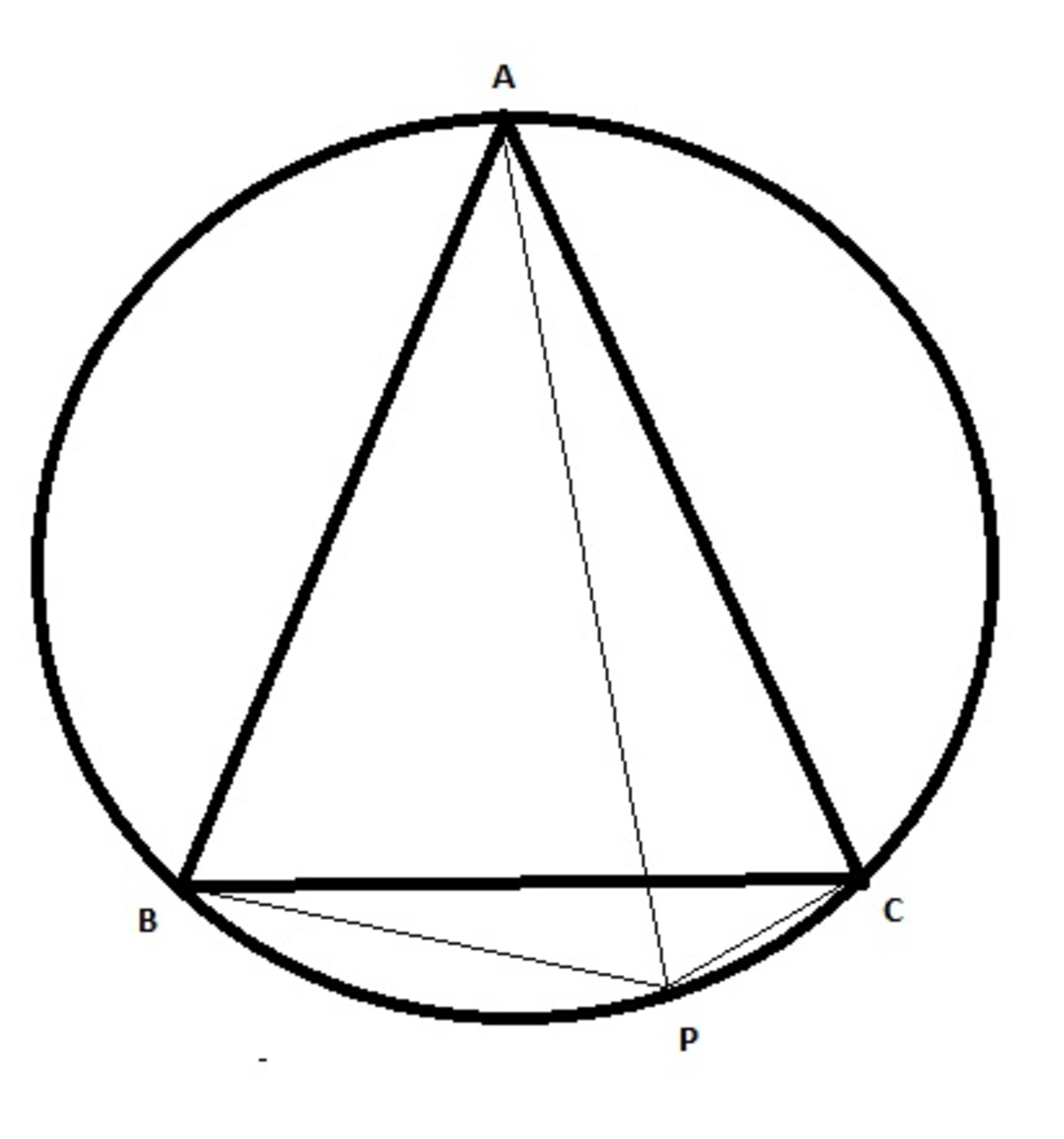Not As Easy as you think, but still pretty easy
Let be an equilateral triangle inscribed in a circle. Let be a point on the minor arc of . If and . What is the length of ?
Note : The numbers are indeed 5000 and 346910923809328090099.
The answer is 346910923809328095099.
This section requires Javascript.
You are seeing this because something didn't load right. We suggest you, (a) try
refreshing the page, (b) enabling javascript if it is disabled on your browser and,
finally, (c)
loading the
non-javascript version of this page
. We're sorry about the hassle.
Here is an inaccurate picture of this problem:
For the moment, and for ease of typing, call the length of PC "x".
The triangle being equilateral works out nicely as it splits the circle into 3 equal minor arcs, each being 3 2 π .
We can use the formula for an inscribed angle to find both angles formed by P:
m ∠ A P B = m ∠ A P C = 2 1 ( 3 2 π ) = 3 π
We now have the two angles above and the lengths of PB and PC. We want the length of AP (call that length "b"). All we are missing is the length of the side of the equilateral triangle (call that length "c"). But maybe we don't need it if we use the Law of Cosines twice.
1) c 2 = x 2 + b 2 − 2 x b cos 3 π = x 2 + b 2 − x b
2) c 2 = 5 0 0 0 2 + b 2 − 2 ( 5 0 0 0 ) b cos 3 π = 5 0 0 0 2 + b 2 − 5 0 0 0 b
And now we can set equations 1 and 2 equal to one another and solve for b. x 2 + b 2 − x b = 5 0 0 0 2 + b 2 − 5 0 0 0 b ⇒ b = x − 5 0 0 0 x 2 − 5 0 0 0 2 = x − 5 0 0 0 ( x + 5 0 0 0 ) ( x − 5 0 0 0 ) = x + 5 0 0 0 And finally, take that gargantuan number "x", go to the thousand's place and add 5. Luckily the thousand's place is a 0, so all one must do is copy/paste that big number and change one digit, like so: 3 4 6 9 1 0 9 2 3 8 0 9 3 2 8 0 9 5 0 9 9